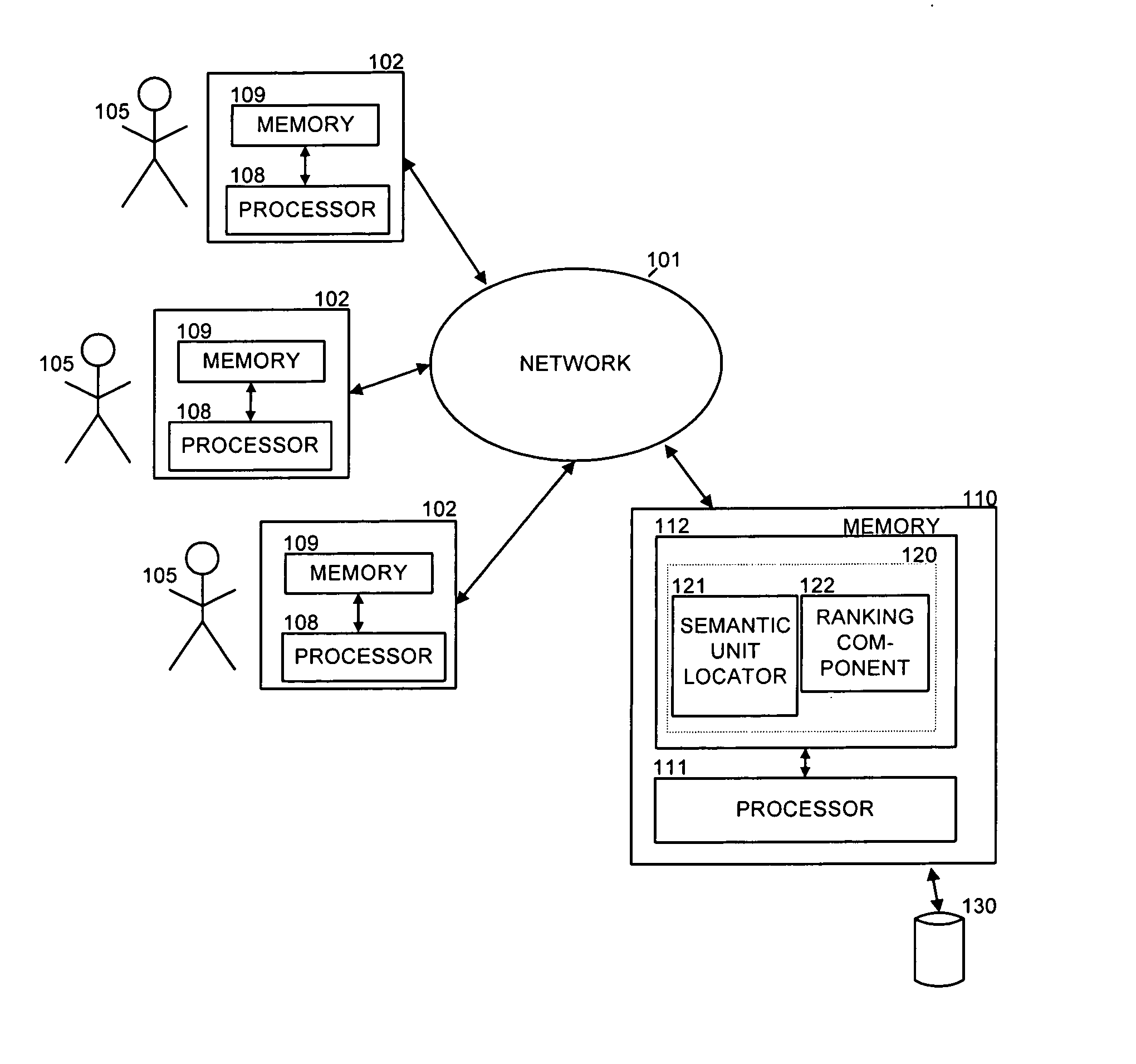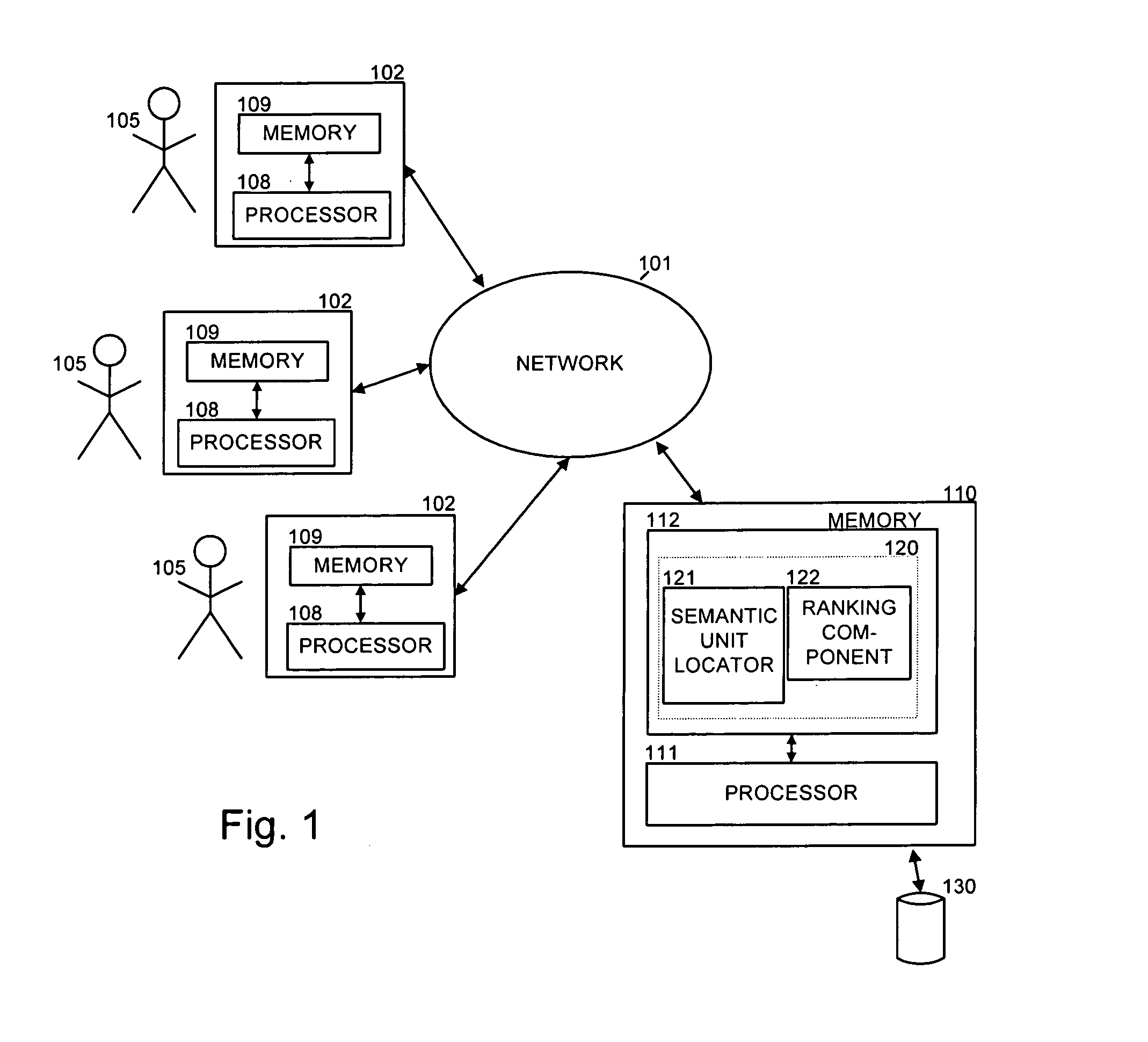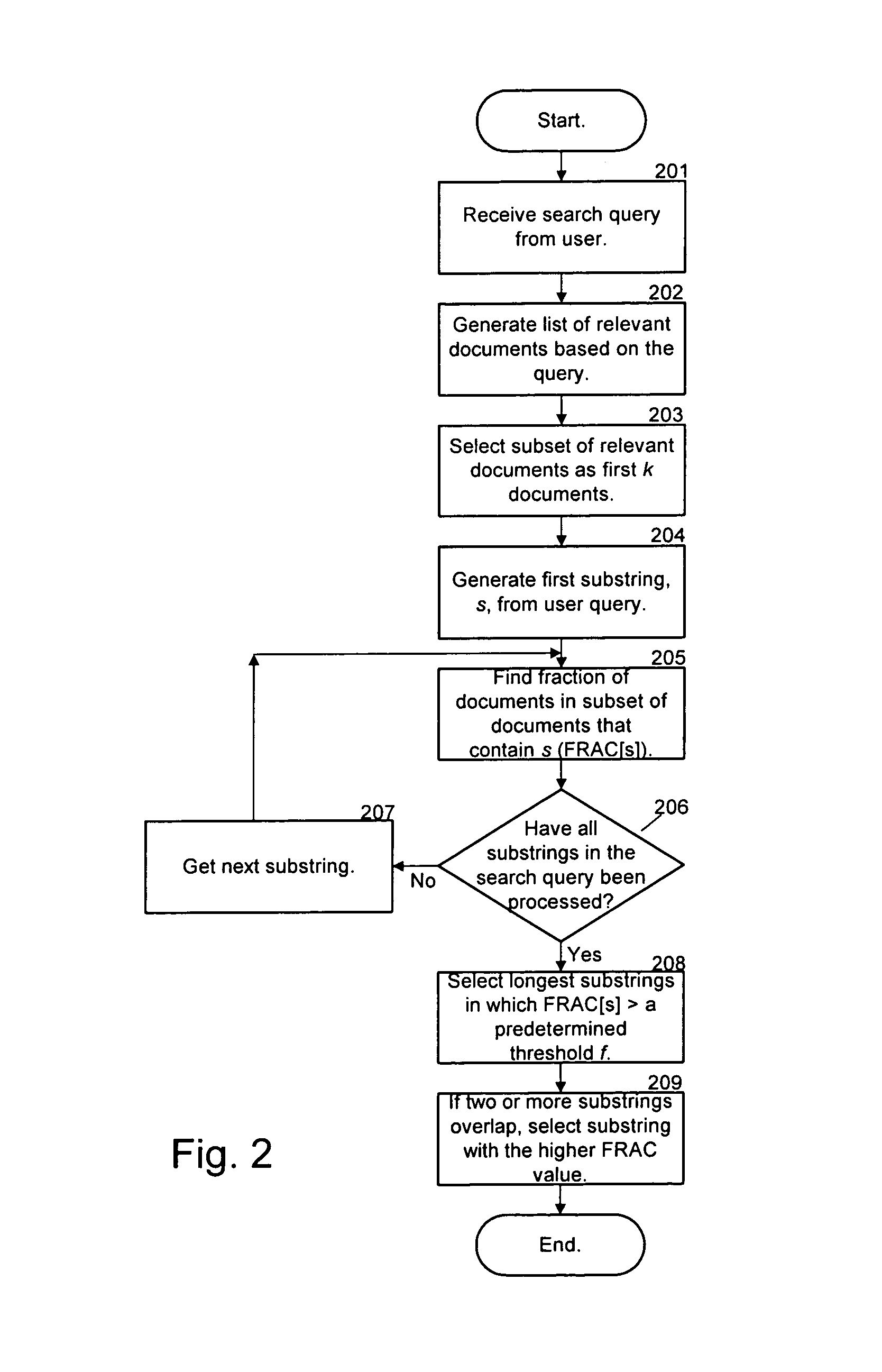Identification of semantic units from within a search query
a semantic unit and search query technology, applied in the field of information location, can solve the problems of increasing the number of new users inexperienced at web research, difficulty in locating a desired portion of information, and increasing the amount of information on the web
- Summary
- Abstract
- Description
- Claims
- Application Information
AI Technical Summary
Problems solved by technology
Method used
Image
Examples
Embodiment Construction
[0026]The following detailed description of the invention refers to the accompanying drawings. The detailed description does not limit the invention. Instead, the scope of the invention is defined by the appended claims and equivalents.
[0027]As described herein, a semantic unit locator identifies compounds within a query based on the overall context of the query. The semantic unit locator generates a subset of documents that are generally relevant to the query based on the individual terms within the query. Combinations of potential compounds from the query are then evaluated against the subset of documents.
[0028]FIG. 1 is a diagram illustrating an exemplary network in which concepts consistent with the present invention may be implemented. The computer network includes multiple client devices 102, a server device 110, and a network 101, which may be, for example, the Internet. Client devices 102 each include a computer-readable medium 109, such as random access memory, coupled to a...
PUM
 Login to View More
Login to View More Abstract
Description
Claims
Application Information
 Login to View More
Login to View More - R&D
- Intellectual Property
- Life Sciences
- Materials
- Tech Scout
- Unparalleled Data Quality
- Higher Quality Content
- 60% Fewer Hallucinations
Browse by: Latest US Patents, China's latest patents, Technical Efficacy Thesaurus, Application Domain, Technology Topic, Popular Technical Reports.
© 2025 PatSnap. All rights reserved.Legal|Privacy policy|Modern Slavery Act Transparency Statement|Sitemap|About US| Contact US: help@patsnap.com



